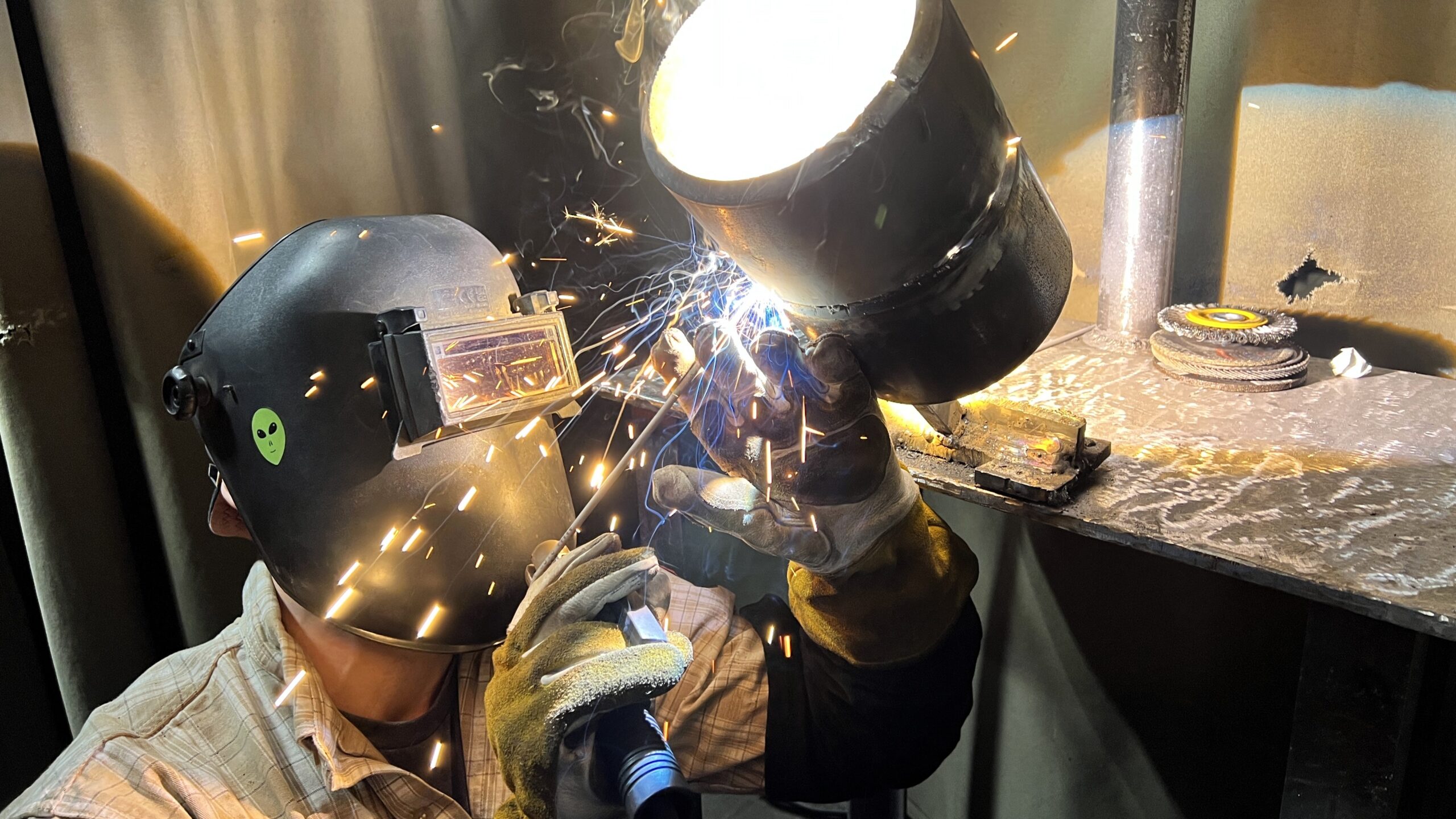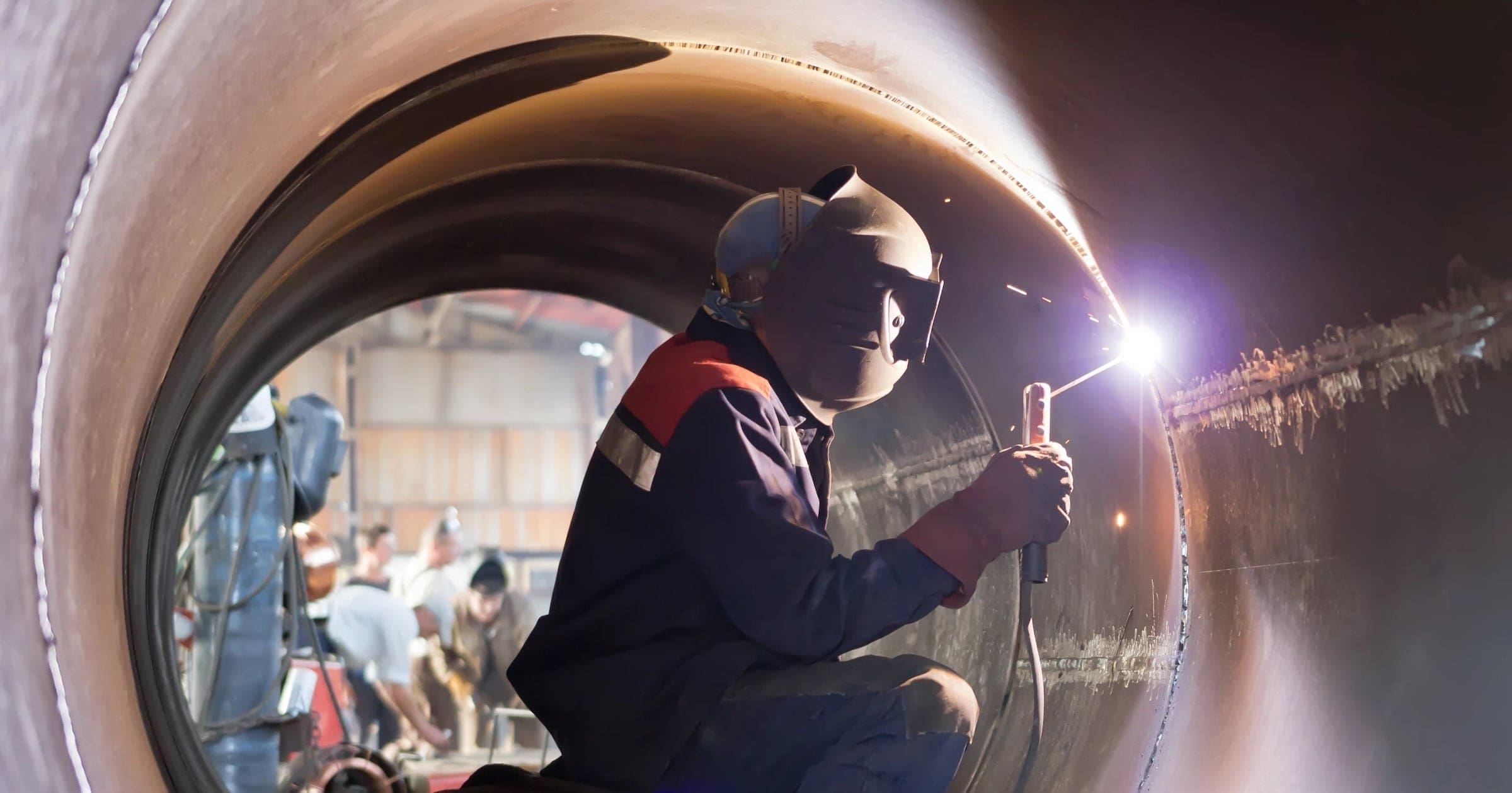Usual Welding Repair Service Issues and Exactly How to Address Them Efficiently
Welding repair work typically run into a variety of issues that can jeopardize the integrity of the end product. Common problems include poor infiltration, porosity, and misalignment, amongst others. Each defect presents unique difficulties that need specific strategies for resolution. Understanding these concerns is crucial for welders aiming to boost their outcomes and abilities. This conversation will explore these common welding repair concerns and efficient approaches to address them.
Insufficient Penetration
Insufficient penetration occurs when the weld steel stops working to fully fuse with the base product, resulting in weak joints and potential architectural failures. This concern typically comes from inadequate warmth input, inaccurate electrode angle, or improper welding rate. Welders might experience poor penetration as a result of a mistake of the necessary criteria for a certain material density or type. In addition, contamination on the base product's surface area can hinder effective bonding, exacerbating the issue. To deal with poor penetration, welders need to ensure proper settings on their equipment and preserve a tidy work surface area. Normal assessment of welds is recommended to identify any deficiencies early, enabling prompt improvements and the prevention of jeopardized architectural stability in bonded assemblies.
Porosity
Porosity is a typical problem in welded joints that shows up as small gas bubbles trapped within the weld steel. This defect can endanger the honesty of the weld, causing lowered stamina and potential failure under tension. Montana Mobile Welding and Repair Belgrade Fabrication. Porosity generally occurs from contamination, dampness, or inappropriate welding strategies, which enable gases to run away right into the molten weld swimming pool. To address porosity, welders ought to assure correct surface prep work, maintain a clean workplace, and use appropriate welding specifications. Furthermore, picking the ideal filler product and protecting gas can mitigate gas entrapment. Regular inspection and screening of welds can aid recognize porosity early, guaranteeing prompt rehabilitative actions are taken, thus preserving the top quality and reliability of the bonded structure
Imbalance
Imbalance in welding can emerge from numerous factors, consisting of incorrect arrangement and thermal growth. Comprehending the origin is important for reliable resolution. Several modification strategies are available to realign parts and ensure structural honesty.
Sources of Imbalance
Welding misalignment usually originates from a variety of underlying issues that can endanger architectural integrity. One primary cause is improper fit-up of components before welding, which can cause voids and irregular surface areas. Variations in thermal development throughout the welding process can likewise lead to distortion, particularly if the materials being signed up with have various coefficients of expansion. Additionally, inadequate fixturing and securing might fail to hold components firmly in position, causing movement during welding. Poorly maintained tools, consisting of welding machines and devices, may present incongruities in the weld bead, further adding to imbalance. Driver mistake, stemming from not enough training or experience, can additionally play a considerable function in producing misaligned welds.

Adjustment Strategies Readily Available
Addressing misalignment successfully calls for a combination of corrective methods customized to the specific issues handy. One typical method is using jigs or fixtures to hold parts in the appropriate placement during welding, ensuring consistent alignment. Furthermore, pre-heating the products can aid reduce distortion and boost fit-up. For substantial misalignment, mechanical adjustment techniques, such as making use of hydraulic jacks or clamps, can be used to remedy the position before welding. Post-weld heat treatment may likewise be essential to alleviate stresses brought on by misalignment. Cautious evaluation and adjustment throughout the setup stage can protect against imbalance concerns from becoming substantial issues, advertising a smoother welding process and improving general architectural integrity.
Distortion
Distortion is a common difficulty in welding that can emerge from various factors, consisting of uneven cooling and heating. Understanding the root causes of distortion is necessary for executing efficient prevention strategies. Resolving this issue not only enhances structural honesty yet also improves the total quality of the weld.
Causes of Distortion
When based on the intense warm of welding, materials usually go through changes that can result in distortion. This phenomenon mostly arises from thermal growth and contraction throughout the welding process. As the weld location warms up, the material increases; upon air conditioning, it contracts, which can create inner tensions. On top of that, uneven heating throughout a workpiece can aggravate these stresses, leading to bending or flexing. The kind of product additionally plays a considerable role; steels with differing thermal conductivity and coefficients of expansion might react in a different way, resulting in unpredictable distortions. Inadequate joint design and insufficient fixturing can contribute to imbalance throughout welding, boosting the probability of distortion. Comprehending these reasons is necessary for effective welding fixing and avoidance techniques.
Prevention Techniques
Reliable prevention methods for distortion during welding focus on regulating warm input and guaranteeing appropriate joint style. Preserving a regular heat input aids to lessen thermal expansion and contraction, which can result in distortion. Making use of strategies such as preheating the work surface can likewise decrease the temperature level slope, promoting uniform home heating. In addition, picking ideal joint layouts, such as T-joints or lap joints, can enhance stability and reduce anxiety focus. Executing proper fixturing to safeguard the work surfaces in location additionally aids in preserving placement throughout the welding process. Staggered welding series can distribute heat extra uniformly, preventing localized distortion. By applying these techniques, welders can significantly decrease the probability of distortion and improve the total high quality of their welds.
Splitting
Cracking is an usual concern encountered in welding repair work, typically resulting from various factors such as inappropriate air conditioning rates, product choice, or poor joint prep work. The incident of cracks can greatly jeopardize the honesty of the weld, leading to prospective failures during procedure. To resolve this problem, welders must first assess the source, guaranteeing that products are compatible and properly selected for the certain application. Additionally, controlling the cooling rate throughout the welding process is important; rapid air conditioning can generate stress and bring about breaking. Appropriate joint layout and prep work additionally contribute to reducing the threat. Executing these strategies can improve weld click for more high quality and longevity, eventually lowering the likelihood of fracturing in ended up weldments.

Insufficient Fusion
A significant problem in welding repairs is incomplete blend, which happens when the weld metal does not properly bond with the base material or previous weld passes - Montana Mobile Welding and Repair Belgrade Fabrication. This defect can lead to weak points in the joint, possibly compromising the stability of the bonded structure. Factors contributing to incomplete blend consist of insufficient warmth input, incorrect welding technique, and contamination of the surface areas being signed up with. To resolve this concern successfully, welders ought to ensure proper pre-weld cleansing and surface area prep work, in addition to readjust their welding criteria to attain appropriate penetration and blend. Regular inspection throughout the welding procedure can also assist recognize insufficient blend early, permitting prompt corrective steps to boost the overall quality of the weld
Overheating
While welding repair services can improve architectural stability, overheating provides a significant difficulty that can lead to product degradation. Excessive heat throughout welding can alter the mechanical properties of metals, causing lowered toughness, raised brittleness, and warping. This sensation is specifically vital in high-stress applications where architectural dependability is extremely important. Recognizing getting too hot can involve aesthetic assessments for staining or distortion, as well as monitoring temperature throughout the welding process. To alleviate the dangers connected with getting too hot, welders need to utilize appropriate techniques, such as controlling warm input, changing traveling speed, and using appropriate filler products. In addition, carrying out pre- and post-weld warmth therapies can aid bring back product properties and enhance the overall quality of the repair work, guaranteeing long-term performance and safety.
Frequently Asked Inquiries
What Are the Common Signs of a Welding Defect?

How Can I Examine My Welds for Top quality?
To evaluate welds for top quality, one can use visual assessments, ultrasonic screening, and radiographic approaches. Each strategy assures architectural stability, identifies flaws, and validates adherence to defined requirements, eventually improving the integrity of the bonded joints.
What Safety Preventative Measures Should I Take While Welding?
When welding, one need to focus on security by wearing appropriate individual protective tools, making certain proper ventilation, safeguarding flammable materials away, maintaining a clean workspace, and being aware of surroundings to avoid injuries and visit homepage accidents.
Can I Fix a Weld Without Renovating the Entire Joint?
Repairing a weld without remodeling the entire joint is feasible, depending upon the damage (Belgrade). Methods such as grinding, including filler material, news or utilizing a welding procedure can efficiently deal with specific flaws while protecting the bordering structure
What Equipment Are Important for Reliable Welding Fixes?
Essential tools for efficient welding fixings include a welding maker, cord brush, mill, protective equipment, clamps, and filler materials. Each device plays an important role in guaranteeing high quality and safety during the repair work procedure. Porosity normally develops from contamination, moisture, or inappropriate welding strategies, which allow gases to get away into the molten weld swimming pool. Inadequately conserved tools, consisting of welding machines and tools, might present variances in the weld bead, further contributing to misalignment. When subjected to the extreme warmth of welding, products commonly undertake adjustments that can lead to distortion. Cracking is an usual issue experienced in welding repair work, usually resulting from numerous aspects such as incorrect air conditioning rates, material choice, or inadequate joint prep work. A considerable problem in welding repairs is insufficient combination, which takes place when the weld steel does not appropriately bond with the base product or previous weld passes.